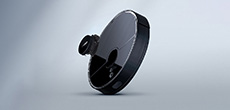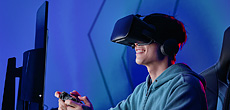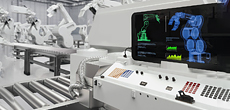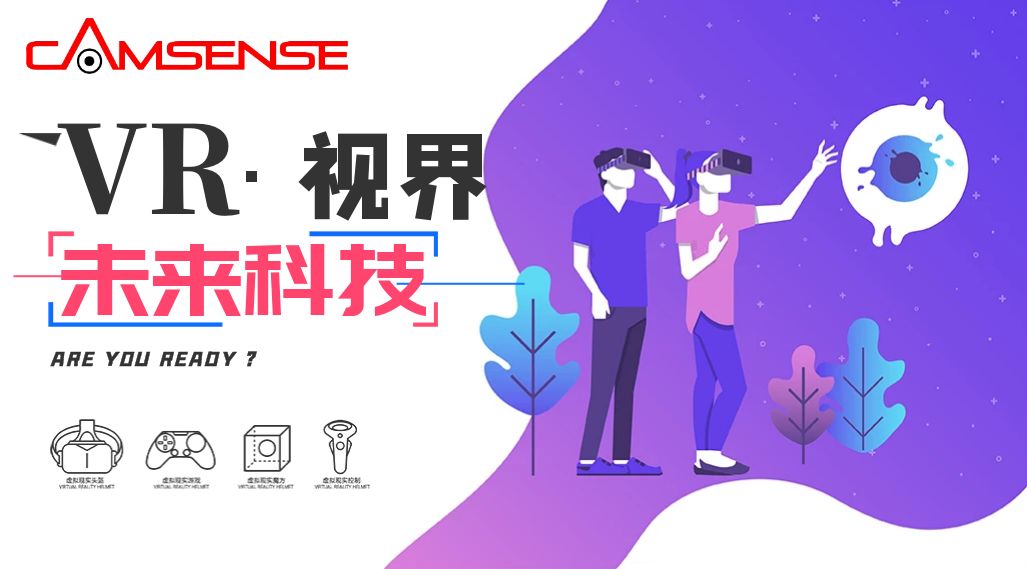Camsense: With monocular visual space positioning technology as the core, it provides core technology and product support for various artificial intelligence applications.
In the past two years, artificial intelligence technology has become increasingly mature, and fields such as robots, drones, smart security, and intelligent manufacturing have been deeply integrated with artificial intelligence, and computer vision technology has become a representative of the transformative force. Camsense conforms to the development of the times and was established in 2014. It focuses on the research and development of high-precision positioning visual sensors. With its unique technical advantage - monocular vision spatial positioning technology as the core, Camsense provides core technology and product support for various artificial intelligence applications.
Christopher, the founder and CEO of Camsense told reporters that there are two major pain points in the visual sensor market. The first is that high precision means high cost, which limits the application scenarios; the second is the contradiction between sensors and computing power. Camsense's in-depth R&D and technological innovation solve its two major pain points.

Christopher introduced to reporters that the core of Camsense is divided into two lines: one is the core algorithm line, and the other is the product line.
First, the core algorithm production line developed the Camsense® HPP SDK, which is a set of infrared optical positioning algorithms based on independent intellectual property rights, built into the company's chips and sensors.
With the support of the algorithm level, Camsense has developed two product lines, professional and consumer, namely the high-precision positioning system Camsense M Pro, Camsense S and LiDAR Camsense X1.
For the high-precision positioning system of Camsense, its positioning accuracy has reached the level of 0.2mm. In fact, with the continuous enhancement of machine computing power, it is not a problem for the accuracy of machine vision to reach the sub-millimeter level at present, but this technology is generally used in scenes with limited space for machine movement, such as human detection and medical surgery. However, when the moving range of the machine is large, it is a huge challenge to improve the detection accuracy. The breakthrough of Camsense has realized the detection and positioning of the sub-millimeter level in a large space, and the detection accuracy has been improved to 0.2mm in the industry. Very few.
It is worth mentioning that Camsense S, although it is a large space and high-precision positioning system based on multiple monocular cameras, can still be used in high-precision instrument manufacturing and medical surgery navigation. According to Christopher, it integrates the multi-sensor fusion technology accumulated by Camsense over the years, and benchmarks the OptoTrack series products of NDI, a leading company in the industry, and even outperforms its peers in some indicators.
At the consumer level - lidar Camsense X1, Christopher told reporters that it is the fulcrum of Camsense's revenue, accounting for 70% of sales.
It is understood that this product can be used for positioning and navigation of sweeping robots, monitoring robots, and obstacle avoidance. At present, hundreds of thousands of units have been shipped, and they have been commercialized by brands such as 360 and Lenovo.
In fact, in the sweeping robot industry, the lidar solution basically adopts the solution of industrial-grade linear array Sensor+DSP chip, but the result is high cost, which is ultimately reflected in the price of the sweeping robot terminal product, and users are discouraged.
Camsense uses a consumer-grade area array Sensor+ASIC chip solution to achieve high frame rate effects, improve product performance and reduce costs. About the ASIC chip in Camsense LiDAR - Camsense® C1, it is a high-performance ASIC image processing chip with completely independent intellectual property rights, including a high-speed image processing engine, which can support 4k resolution, 4000FPS image processing. It supports CMOS sensors of various types, different resolutions and sampling accuracy to meet the needs of different scenarios, which can replace imported chips and reduce costs.
It is reported that Camsense has already started to make a profit after entering the middle of 2019. When it comes to the profit model, Christopher said that it adopts the most typical business model of the IT industry - direct sales. For the promotion model, direct sales and cooperation with dealers are used for promotion.

At present, 70% of the company's team are R&D personnel, mainly from the fields of artificial intelligence algorithms, optics, and industrial manufacturing. Christopher, the founder and CEO of Camsense, graduated from Tsinghua University majoring in computer vision and worked at Bell Labs in Chicago. He has more than ten years of in-depth research in the field of computer vision spatial positioning and human-computer interaction.
In terms of financing, Camsense recently announced in November 2019 that it had completed the A+ round of financing of more than 40 million yuan. The lead investors were Fengyang Capital and Chenhui Ventures, and Nanling Fund and old shareholder Dongfang Fuhai joined the investment. This round of funds is mainly invested in product research and development and production line construction to strengthen overseas strategic layout.
Camsense said that visual sensors are a rigid need for social industrialization and intelligence. At present, the market scale is still huge. For the field of service robots, real-time positioning and navigation of the position of mobile robots is the key core technology of mobile robots. However, high-precision detection systems are required in both industrial measurement and medical fields. Product calibration and measurement are performed in industrial production links. In computer-assisted surgery, three-dimensional spatial position positioning and precise measurement of scalpels are performed to assist in completing the operation.
Talking about the future, Christopher said that Camsense is committed to becoming a global leader in computer vision spatial positioning. Based on the existing business lines, with the arrival of 5G, VR/AR may be another business focus of our development. In the future, Camsense will focus more on and explore the monocular vision technology, promote the expansion of more fields, and become the "soul" of the development of the artificial intelligence industry.










